What do Netflix, Uber, Danske Bank & Facebook have in common? They all started with monolithic architecture and pivoted to microservices.
Choosing monolithic vs microservices architecture is a common dilemma when an enterprise begins to build a software system. Monolithic – the traditional approach to software development is often faster to develop and deploy, while microservices applications are simpler to scale and manage. So which application architecture model is best for your enterprise?
It is not a question of microservices architecture vs monolithic architecture; rather, as you will see, both are great choices in different scenarios.
The right application architecture ensures that the application meets your business needs and matches business processes. If the architecture is not sound, you might have to deal with dreadful compounding technical debt and spaghetti architecture. In this blog post, we’ll explore the key concepts, pros & cons of monolithic and microservices architecture, real-world examples, and key differences between monolithic vs microservices architecture to help you choose the right architecture approach.
What Is Monolithic Architecture?
Monolithic architecture means a single-tired software application where all the functionalities of an application are tightly integrated into one singular unified codebase. The name is derived from a monolith – a large single upright block of stone. It is a traditional approach to software development that is easier to develop and deploy initially but challenging to maintain as it grows.
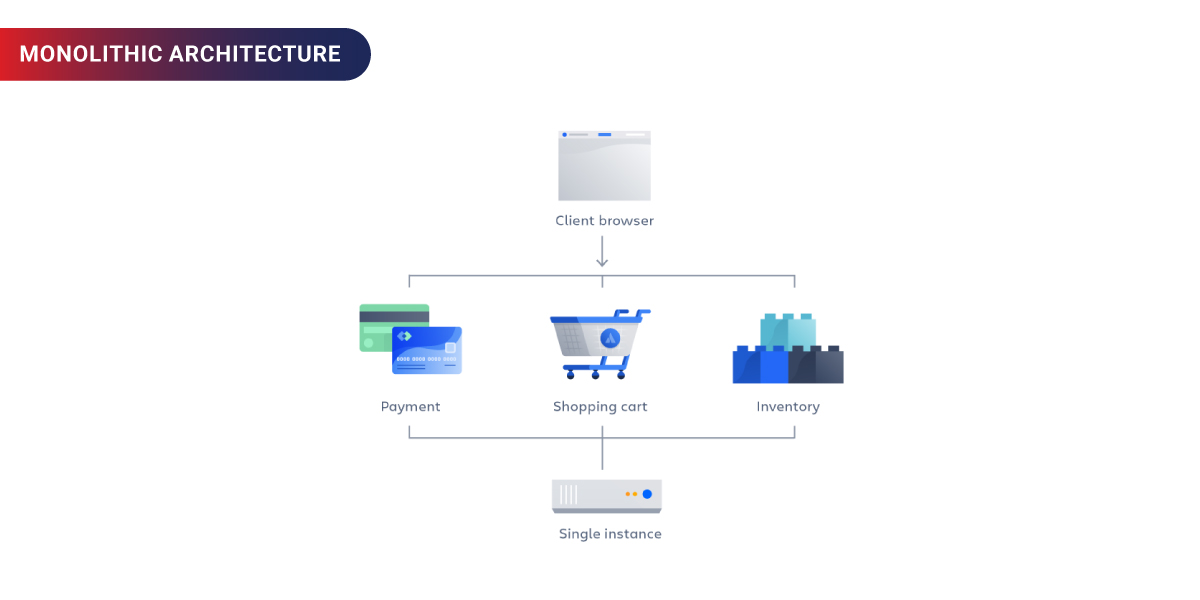
Advantages of Monolithic Architecture
Monolithic architecture sounds like a dated approach, but it has several key advantages to offer; here are just a few.
Faster and Easy to Develop
Since your code is in one place, you don’t have to worry about checking out a lot of different repositories. Even when you have to debug or test, you only have one application to worry about.
Easier to Deploy
Monolith can be convenient for simple, lightweight applications with less frequent code changes. Since you need to deploy only one executable file or directory rather than multiple components, it makes deployment faster. Most applications start as monolith simply because it is much quicker, and you only have one application to worry about to get them to the market.
Easier to Debug and Test
Single-tiered monolithic applications operate as one indivisible unit, which makes it easier to debug and run end-to-end testing.
High Performance and More Secure
Since it is a single code base, it has negligible latency, and it is conveniently easy to ensure that security measures are applied consistently across the entire application.
Disadvantages of Monolithic Architecture
Despite its many advantages, monolithic architecture has serious glaring issues that usually compel teams to switch to microservices. When people think of monolithic, they often call it tangled spaghetti, given how each component is connected. Monolithic architecture has the following drawbacks and limitations:
Large Codebase
The large code base makes development challenging and complex for developers and the QA team.
Challenge with Scalability
It can be complex to scale and maintain a Monolithic app, as it often gets complicated when different modules have conflicting resource requirements. Even the best-designed applications can look like a giant mess once it reaches a particular stage because making even a small change requires testing the entire stack.
A Barrier in Adopting the Latest Technology
Any update or change in language or frameworks affects the entire application, adopting a new technology will require the team to rework from the ground up thoroughly. Therefore, it can be extremely challenging to apply the latest technologies.
Long Release Cycle Makes Deployment Challenging
If your application has many different features, making even a small change requires you to redeploy the entire monolith stack each time. This can take a lot of time to do a release.
What is Microservices Application Architecture?
Microservices architecture is a cohesive and granular approach to software development. It breaks down the architecture into a collection of independently deployable services. Each microservice is self-contained as it covers its logic and database and can be updated, deployed, and scaled independently. If you take Netflix, for instance, they may have one component in charge of streaming videos and another one in search.
Microservices communicate with each other either through APIs for synchronous communication, a message broker for synchronous communication, or a service mesh.
This approach allows for greater scalability, flexibility, and improved fault tolerance as each service can be developed, deployed, and managed independently.
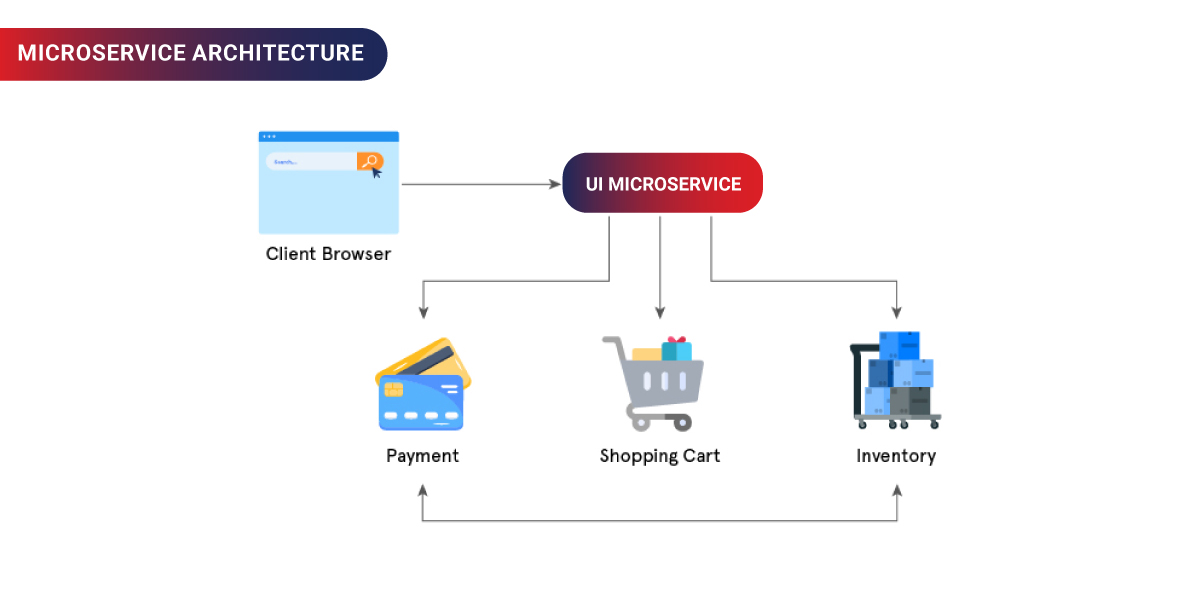
Ten Fundamental Design Principles of Microservices
Let’s explore key design principles to develop scalable and adaptable microservices applications.
- Autonomous: Each microservice’s database and business logic should be independent of other microservices.
- Decentralization: Each microservice’s architecture and team must be responsible for development, deployment, and maintenance.
- Agility: Individual services should enable fast and flexible development, deployment and be quickly scalable without affecting the system.
- Resilience: Each microservice should be able to handle errors and failures independently.
- Scalability: Microservices architecture should enable easy scaling of individual services to meet evolving changes without affecting the system.
- Continuous Integration & Continuous Deployment: Microservices should enable CI/CD so that each service can build, test and deploy independently.
- API First Approach: Each microservice must have well-defined and documented APIs that the other services can use.
- Data Management: Each microservice must have its own database, which can be of different types and communicate through APIs.
- Domain-Driven Design: Microservices must be designed around business domains where each service emphasizes a specific business functionality.
Advantages of Microservices Architecture
Easier to Maintain and More Reliable
Each microservice is only responsible for one business functionality and is easier to maintain. Each microservice can be independently developed, updated, deployed, and scaled. Therefore, there are fewer chances that the whole system will crash because of an error in one component.
Scalability
Each autonomous service can be scaled to meet the demand for the application it supports. This allows the team to accurately estimate the infrastructure and the cost of a particular feature and ensure faster time to market if there is a spurt in demand.
Continuous Deployment
Microservices enable continuous integration and continuous deployment. It allows faster release to test new ideas quickly and roll back if it doesn’t work out. It translates into a quicker and more frequent release cycle. The low failure cost makes it easy to update the code and accelerates the speed to market for new codes.
Resilient and Fault Tolerance
Since each service runs independently, it is easier to isolate and identify the problem in case of a component’s failure. Unlike monolith architecture, if one service fails in a microservice architecture, it’s less likely to crash the entire application. The high fault tolerance of microservices helps improve the resilience of the application.
Reusable Code
Dividing software into granular modules enables the team to use the function for multiple purposes. This allows developers to create new capabilities without writing a line of code.
Disadvantages of Microservices Architecture
Microservices can be equally complex and challenging. These, too, come with significant costs and limitations. Here are other major disadvantages:
Lack of Clear Ownership
Since multiple teams create more microservices in more places, it becomes difficult to determine whom to contact for support over time as more services are available to manage. Implementing them and putting them all together can be time-consuming and resource intensive. It often results in slower development and hampers operational performance if not properly managed.
Lack of Standardization
The proliferation of languages and logging standards across multiple modules and databases in a microservice requires more monitoring.
Harder to Debug
Microservices can be complex as you must look into multiple services to identify where the bug originated. The proliferation of services, each with its own implementation, architecture, and set of logs, requires well-designed API for scalable debugging. The absence of curated workflows, best practices, and a set of primitives can make testing challenging and increase the risk of failure.
Exponential Infrastructure Overheads
The agility and flexibility of each microservice imply that each has its own overheads for the test suite, deployment, hosting infrastructure, monitoring, tools, and more. There are more components to manage and the need for additional infrastructure tooling.
Performance and Reliability Issues
The multiple autonomous components and multiple CI/CD pipelines in microservices add complexity and give rise to technical debt. If technical debt is not managed correctly, it can lead to a loss of flexibility, slower development, and significant operational failure.
Examples of Microservices Architecture
Media and Entertainment Industry
Netflix:
The world’s leading OTT initially used monolith architecture, but it shifted to microservices after it suffered a massive outage in 2008 when a single mistake caused massive data corruption and led to several days of downtime. They decided to break down their monolith into 700 microservices which presently stands at over 1000, for faster development, testing, and deployment of services. Microservices give Netflix the scalability it needs and independently deploy each service based on growing demand, thus enhancing the performance and reliability of Netflix.
E-commerce Industry
Amazon.com
Initially, Amazon.com was built on a two-tier monolithic app and switched over to microservices after frequent outages and financial losses in 2021. The distributed architecture allowed Amazon.com unlimited flexibility, allowing them to add or remove e-commerce functionality that they found suitable. It also allows Amazon to shorten and simplify the deployment pipeline to meet the dynamic e-commerce landscape.
Interestingly, Amazon’s earlier adoption of Microservices architecture led them to develop and introduce Amazon Web Services that we know today.
Banking and Fintech Industry
Monzo Bank
Monzo Bank, a London Based bank, uses a greenfield microservices architecture to build a mobile-first U.K. digital bank. Monzo has used the microservices architecture to establish its core banking systems from scratch. Microservices enable scalability and flexibility it might need when scaling banking services. It allows them increased agility and faster release cycles so the app updates can be deployed within hours. Moreover, as a digital-first bank, Monzo Bank can redeploy new application features without fear of failing the entire application.
Transportation Industry
Uber
Uber initially adopted monolith architecture, but over time due to the technical debt and complexity of the monolith architecture, it pivoted to microservice. It helped them build, deploy and release apps faster, fix bugs, and integrate its fast-growing global operations. Moreover, making changes to the complex and challenging monolith architecture required developers with extensive experience. Uber realized that making even minor changes to its existing monolith tech stack would require highly experienced developers. Thus, it shifted to microservices.
Difference Between Microservices and Monolithic Architecture
Monolithic architecture is a traditional unified model for designing a software program. It is built as a self-contained single, cohesive unit with one codebase, where all modules are tightly integrated. So, updating even one feature means rebuilding and redeploying the entire system.
On the other hand, Microservices architecture breaks down the large monolithic application into individual components. Each component has a single responsibility and is usually in charge of a single business functionality. Microservices connect through APIs, allowing each to be independently built, deployed, operated, and scaled. So let us walk you through their differences by comparing them on different parameters.
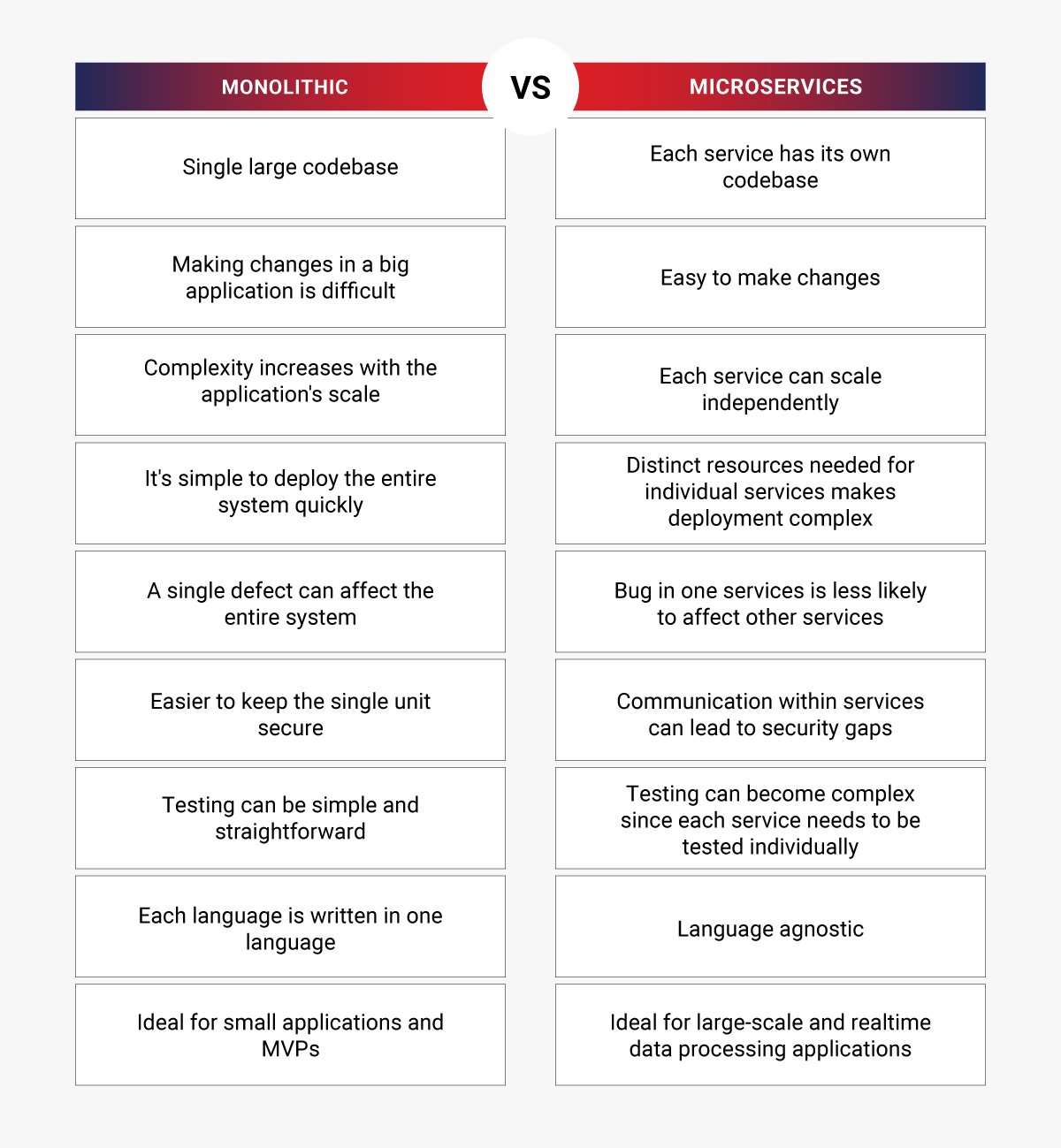
Development
Microservices – A microservice architecture has various independent components allowing developers to work independently. It helps to simplify and accelerate development. However, it requires careful planning before starting to accelerate software development.
Monolithic – Monolith architecture has only one unified codebase making it easier to develop. All components are tightly integrated into one codebase, resulting in faster development cycles.
Deployment
Microservices – Deploying microservices applications is complex because each service is autonomous and needs to be deployed independently. A preferred route is containerizing the microservices by packaging the code and dependencies before deploying them.
Monolithic – Deploying microservices is simple as the team has to deploy only one unified codebase that includes the dependencies within a single environment.
Debugging
Microservices – It can be more challenging in the case of Microservices because the system tends to grow in complexity and is made of several moving parts. Tracking the root cause of an error or bug can be extremely tricky and complicated. It often requires coordination, and constant discussion, and feedback among the team, which is both time-consuming and resource intensive.
Monolithic – Debugging in a monolith architecture is relatively easy to trace and track requests. It is because monolith has a single code base that runs as a single process. This makes it easy to run in debug mode and allows you to trace the data movement within the same programming environment. However, debugging can be time-consuming even for seasoned developers, especially for large monolith applications with legacy codebases.
Scalability
Microservices – Microservices support distributed system where each software component can be scaled independently. This allows you to allocate resources based on the demand in a specific region.
Monolithic – Scaling monolith applications is a major challenge because it contains all functionalities in a single code. Making a minor update in one part of the code will require changing the entire application.
Monolithic or Microservices: What to Choose When
Both monolith and microservices architecture have their pros and cons. There is no one size fits all. Each is best suited to a particular approach in application development. When deciding between the two microservices vs monolith architecture, the following factors will help you make the final decision:
When to Choose Monolithic Over Microservices?
Simple Application or Prototype
A monolithic architecture is more suitable for applications that do not require high scalability, flexibility, and business logic.
Tight Deadline and Need Faster Go-To-Market
A monolith architecture is recommended if you are starting with a brand-new application. Monolithic architecture is best preferred when speed to market is your top priority. Monolith architecture makes it possible to launch an app in 2-3 months to validate your business idea. Most apps, even Netflix, started as a monolith and later pivoted to microservices when they needed to scale.
Limited Budget
Monolithic applications require fewer resources, technologies, and developers. Thus, it costs less and is ideal for those on a limited budget.
Lower Software Latency
If you want minimum delay in processing a high volume of data, choosing monolithic is a preferred choice. As all communications are synced within a single instance, data travels faster from one point to another.
Well-Organized Code
Monolith architecture has a unified code base and allows for individual feature modules.
When to Use Microservices vs Monolith Architecture?
You Have a Complex and Scalable Application
You have an application with an extensive pipeline for data collection and many data sources. In such cases, microservices make scaling and adding new capabilities to your app easier. Similarly, microservice architecture would be the best way to manage if you wish to build a large application with multiple modules and user journeys.
Release New Features Frequently
Microservices significantly boost time to market. So, if you plan to frequently build, deploy and release new functionality without redesigning the whole application, choosing microservices is the preferred route.
High Fault Tolerance
Microservices are resilient, and each associated modules are autonomous; even if a particular system component fails, there will be no downtime, and the application won’t stop working.
Plan to Use the Latest or Multiple Technologies
The granular structure of microservices allows you to use emerging/ latest or even multiple technology stacks in your application.
Steps to Migrate From Monolithic to Microservices Architecture
A greenfield microservice application is usually rare. Most companies pivot from monolith to microservices architecture for its promise of better resilience, scalability, faster market time, and ease of maintenance.
If you’re ready to migrate from monolithic to microservices, the steps below list the basic process. But remember, for more comprehensive migration, an in-depth infrastructure assessment, deconstructing your monolith architecture, and thorough testing by a team of experts will help you get there.
It is recommended to follow Strangler FigPattern, which involves gradually building a new application rather than migrating the entire code simultaneously. The process consists of incrementally accomplishing microservices modernization and running the application along with the legacy monolithic application. Over time, the use of monolithic applications reduces, and it becomes a microservice. A typical process to migrate from monolithic-based architecture to microservices involves the following steps.
- Identify logical components
- Flatten and refactor components
- Identify component dependencies
- Identify component groups
- Create a unified API for the remote user interface
- Migrate component groups to macroservices
- Migrate macroservices to microservices
- Deployment and testing
How Can Rishabh Software Help You Migrate From Monolithic to Microservices Architecture?
You can rely on Rishabh Software’s cloud experts to provide expert guidance on complex IT infrastructure and modernize your legacy monolith system to microservices. We are certified AWS and Microsoft Azure service partners and offer app development & modernization, consultation, managed services & migration to put you ahead.
As more organizations adopt microservices architecture to leverage its multi-fold benefits, our cloud-based application development services help clients achieve their most pressing business objectives.
Success Story:
Migration To Microservices Architecture to Improve Scalability & Efficiency
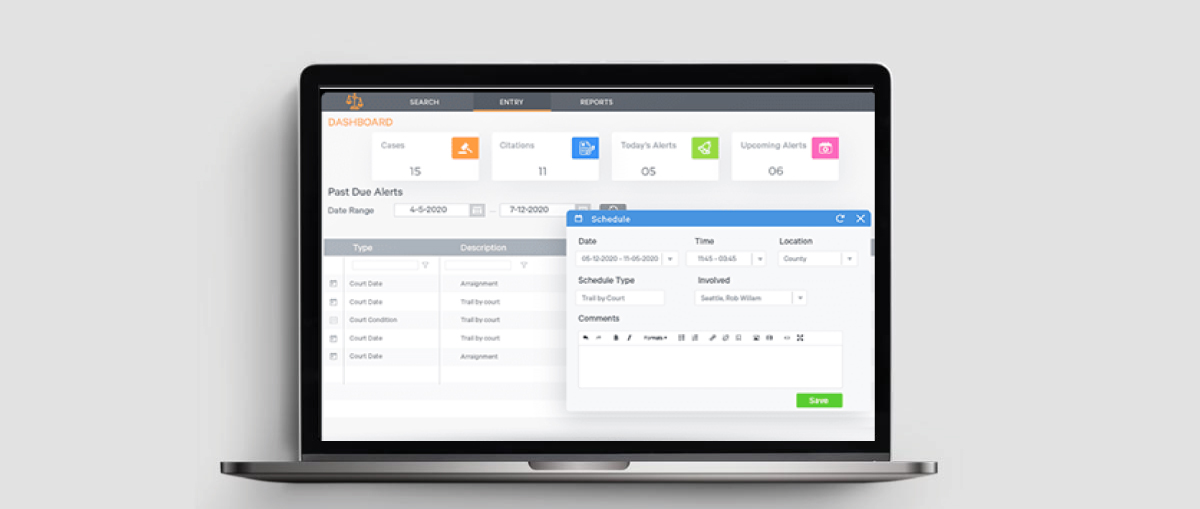
We successfully helped one of our clients to modernize their legacy municipal court case management system.
Our team migrated their legacy infrastructure from the existing monolithic to a microservices-enabled one. The new municipal court management system offers a user-friendly interface that enables the justice department to easily manage and automate critical workflows and case management data (files, scheduler, and more) across levels. The client can now efficiently collaborate, manage the case task overload, and easily track court calendars to manage everything ranging from citation to jury selection.
Key Takeaways
- 4x increase in system performance
- 100% secure digital data management
- 70% faster & accurate access & retrieval of information
Learn how our Municipal Court Case Management Software Modernization services helped the client.
Conclusion
The decision to migrate from monolithic to microservices should be made only when the architecture’s actual value backs the move’s justification. Monolith architecture is beneficial for startups and SMEs. On the other hand, Microservices architecture is suitable for established businesses and large teams with the opportunity for continuous development and deployment as it helps to accelerate digital transformation.
FAQs
Q: Is monolithic architecture faster than microservices?
A: Simple monolithic-based applications have a simple codebase structure, making it easier to debug, test, develop, and deploy. Therefore, simple monolithic-based applications enable faster time to market and are preferred when teams want to build an MVP. However, as the monolithic application grows in complexity, testing, and scaling, the codebase becomes difficult, giving rise to performance issues. On the other hand, since each service under the Microservices architecture can scale up or down independently, it is preferred for high-performance applications that demand frequent release cycles for new functionality.
Q: What will be an ideal application architecture to start with, microservice or monolith?
A: Usually, most companies begin a software application as a monolith and then break it down into microservices in the long run. It is because monolithic architecture is cost-efficient, has fewer operational overheads, and allows for rapid product iteration. However, if your domain involves lots of business logic and the app needs real-time data processing, it is best to start with Microservices. They improve fault isolation, and high operational heads make it a preferred choice for an experienced team that wants to use the latest technology stack.
Q: How do Microservices offer better resilience over monolithic services?
A: Yes! Fault tolerance or resilience is a key difference between monolithic and microservices architecture. In a monolith, a single error in one part of a component can potentially bring down the entire application. Whereas in the case of microservices, since they contain smaller autonomous, independently deployable units, any failure in one component will not affect the entire application make it. It thus not only allows applications to fail fast and recover quickly but also makes it easier to identify and solve failures within time.



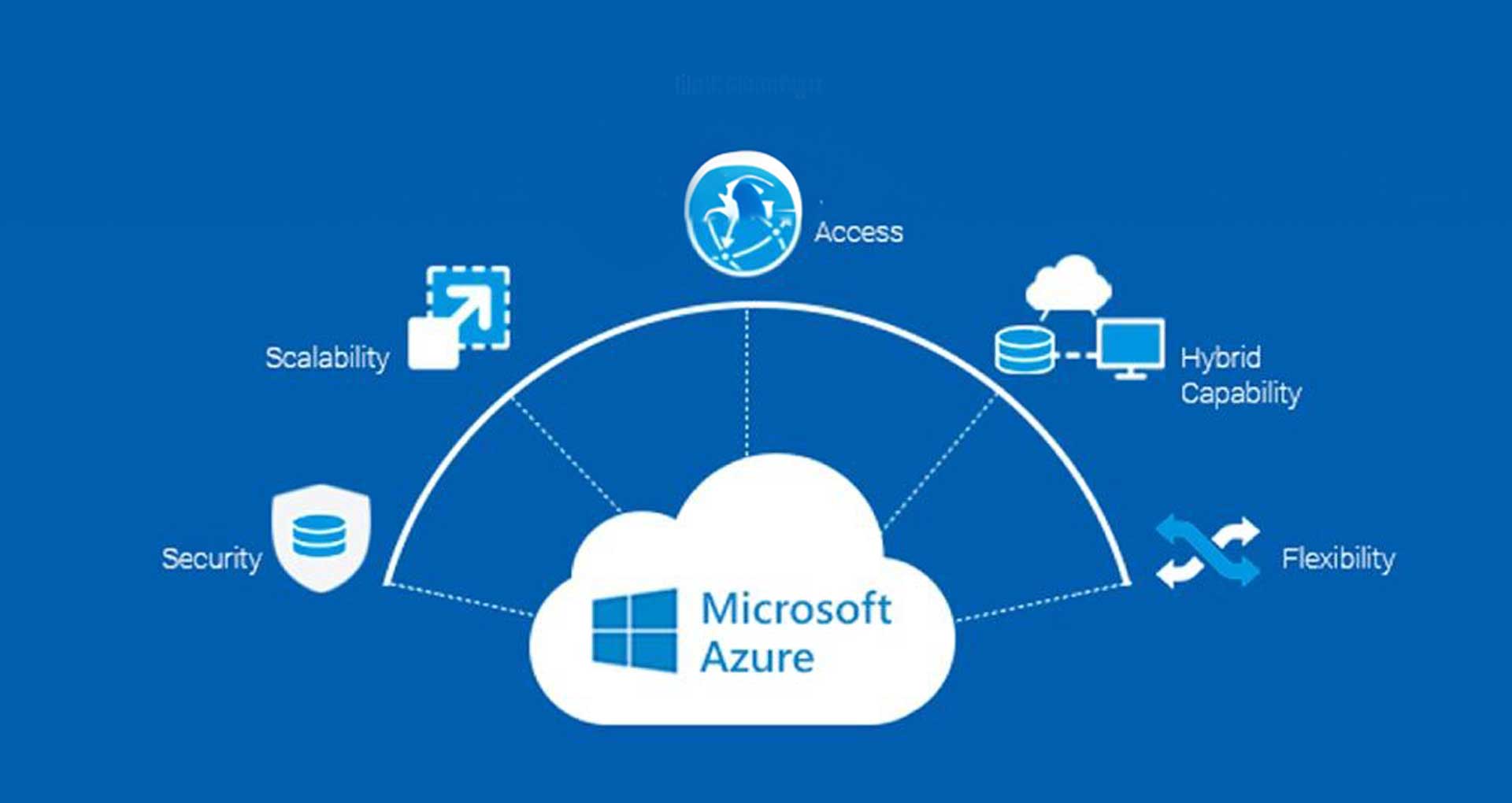







 30 Min
30 Min


